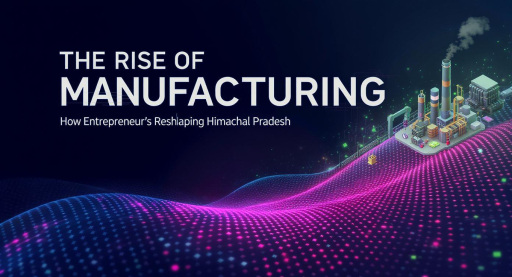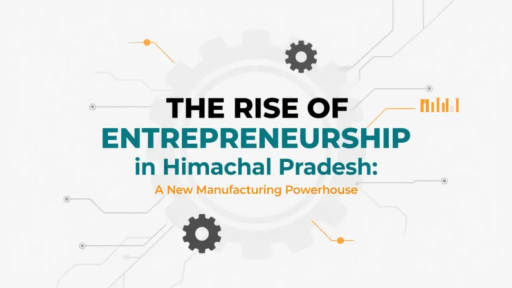It has changed the shape of the global manufacturing landscape and shown an ugly and naked reality in terms of weakness. All this has triggered the reconsideration of many things that have stood for several decades. As we get into 2025, however, manufacturing businesses face a paradoxical lot of challenges and opportunities in post-pandemic manufacturing that crystallize the future of the industry.
Related Books: Business books on several industries
Supply Chain Resilience
The fragility of the global supply chain has been exposed, thus creating disruption all over. Response to that among manufacturers is to strengthen the supply chain by:-
- Diversification: Companies now try to reduce dependence on sole-source suppliers and regions.
- Reshoring and Nearshoring: There is a shift to bring production to the home market.
- Digitalization: Very powerful technologies to see and control supply chains better.
These have become important in terms of post-pandemic manufacturing, where agility and resilience become the cornerstones of success.
Related Business Plans: Business plans on different manufacturing Industries
Workforce Challenges
The manufacturing sector has continued to come face to face with tremendous labor issues:
- Skills Gap: According to a research study held recently, 75% of respondents reported a lack of skilled workers:
- Retein: Almost half of manufacturing companies reported mass resignations in the past year.
- Automation: Companies have fast-tracked the adoption of automation and robotics to curb labor shortages.
Thus, in post-pandemic manufacturing, the two major aspects in solving workforce challenges would be reskilling and automation.
Related article: India’s Roadmap to Net Zero: Opportunities for Eco-Friendly Enterprises
Digital Transformation
The new Industry 4.0 technologies are changing the world of manufacturing.
- Smart factories: By 2032 this will total to 321.94 billion dollar markets for smart factories across the globe.
- AI and IoT: These lead to efficiencies through predictive maintenance and data-driven decisions
- Digital Twins: These virtual twins of physical assets optimize operations and product development.
The post pandemic manufacturing requires a digital integration in order for the industry to remain competitive and agile.
Project Reports: Manufacturing Business Project Reports
Sustainability and Environmental Concerns
Manufacturers face increasing competitive pressures to limit their environmental impacts.
- Carbon Neutrality: Many companies are ambitious with targets for reducing emissions.
- Circular Economy: An increasing emphasis on recyclable materials and sustainable production processes.
- Regulatory Compliance: Stricter environmental regulations are forming a global manufacturing practice.
Post-pandemic, sustainability is no option in manufacturing; it happens to be one of the major driving forces of consumer and regulatory expectations.
Also Visit: Market Research Reports
Economic Uncertainties
The post-pandemic economy presents different challenges:
- Inflation: It is on the rise, and so are the costs of raw materials and energy affecting the profit margin.
- Interest Rate: Increases in Interest Rates are making borrowing much more costly, thus affecting investment decisions.
- Market Volatility: Demand fluctuations and economic instability make it more complicated for long-term planning.
Yet the capacity for resilience in post-pandemic manufacturing will lie in proactive strategies and adaptive measures.
For any Business related Query: Visit NPCS
Opportunities for Growth
Certainly, the post-pandemic is rife with challenges; however, such an era also carries significant potential:
Innovations in Technology
- Additive Manufacturing: 3D printing excites customization while reducing wastes.
- Augmented Reality (AR) and Virtual Reality (VR): More comfortable training and maintenance processes are realized with these much talked-about technologies.
- 5G Networks: Faster and more reliable connectivity is the backbone for real-time data analysis and control.
New Market Opportunities
- Incentives for Reshoring: The CHIPS Act and other government initiatives create opportunities for growing domestic manufacture through U.S. entries in reshoring
- Widening Markets: Opening up areas for agile manufacturers as global supply changes constantly.
Sustainability as a Competitive Advantage
- Green Manufacturing: Consumers prefer companies with sustainable practices as well as attracting regulatory advantages
- Good energy: efficient investments in renewable energy and efficiency measures reduce future costs
Collaborative ecosystems
- Industry partnerships: manufacturers are forming alliances to share their resources and innovation
- Academia-Industry collaboration: partnerships between educational institutions and industries filling the skills gap
These kinds of opportunities will give leaps to the ideas that improved post-pandemic manufacturing will be based on innovation and collaboration.
Demanded Businesses: Most Demandable Business Ideas
Strategies for Success
To impact positively on these changes for makers, it should include:
- Investing in Workforce Development: Prepare reskilling programs and make career paths inviting so that labor challenges can be resolved.
- Admit Agility: Flexible production systems to quickly adapt to changes in the environment of production and market demands.
- Cybersecurity Priority: As manufacturing systems increasingly move towards digitalization, a high-end cybersecurity mechanism becomes necessary.
- Customer First Focus: Data analytics provide insight into and capture a better understanding of customers’ needs.
- Create Strong and Resilient Supply Chains: High analytics with supply diversification can help mitigate the risk.
- Driving Sustainable Innovation: Invest in eco-friendly technologies and circular economy principles.
Post-pandemic manufacturing will be guided by these strategies as a roadmap to help navigate toward overcoming challenges while tapping opportunities.
For Business related Videos: Visit Entrepreneur India
Conclusion
At present, the manufacturing world emerging in a post-pandemic light is one of rapid change and uncertainty. It can however be considered as bringing remarkable opportunities for innovation and growth. Success will therefore be guaranteed for those manufacturers who have learned how to fight through challenging workforce development, digital transformation, and supply chain resilience measures, while taking full advantage of new technologies and seizing new market opportunities.
Such changes and shifts can be used by the manufacturers to provide them with an opportunity not to just survive the post-pandemic manufacturing wreckage but also to thrive in the new manufacturing era. Smart manufacturing will be all about sustainable, agile operations that are capable of thriving in a globally constantly changing world.




